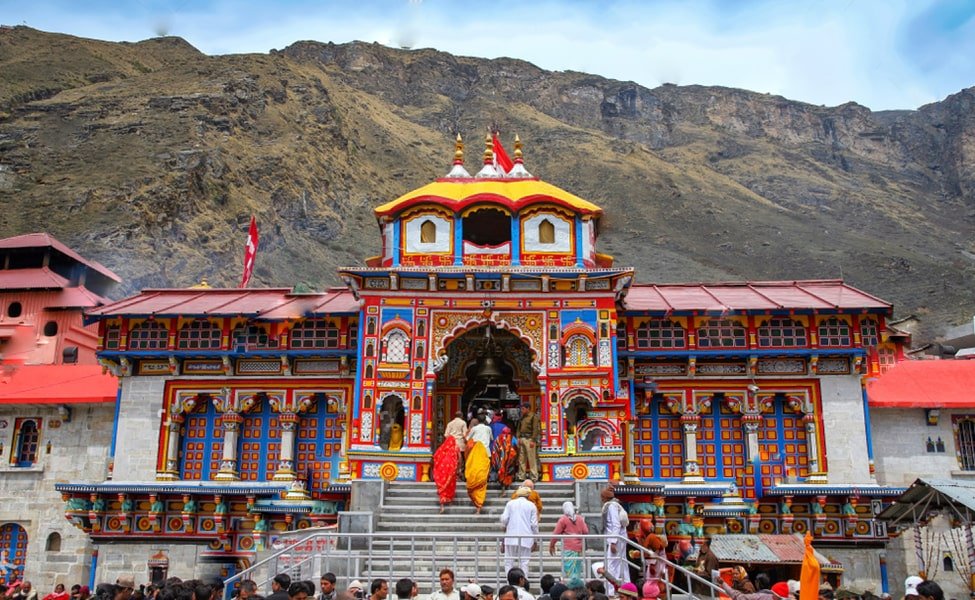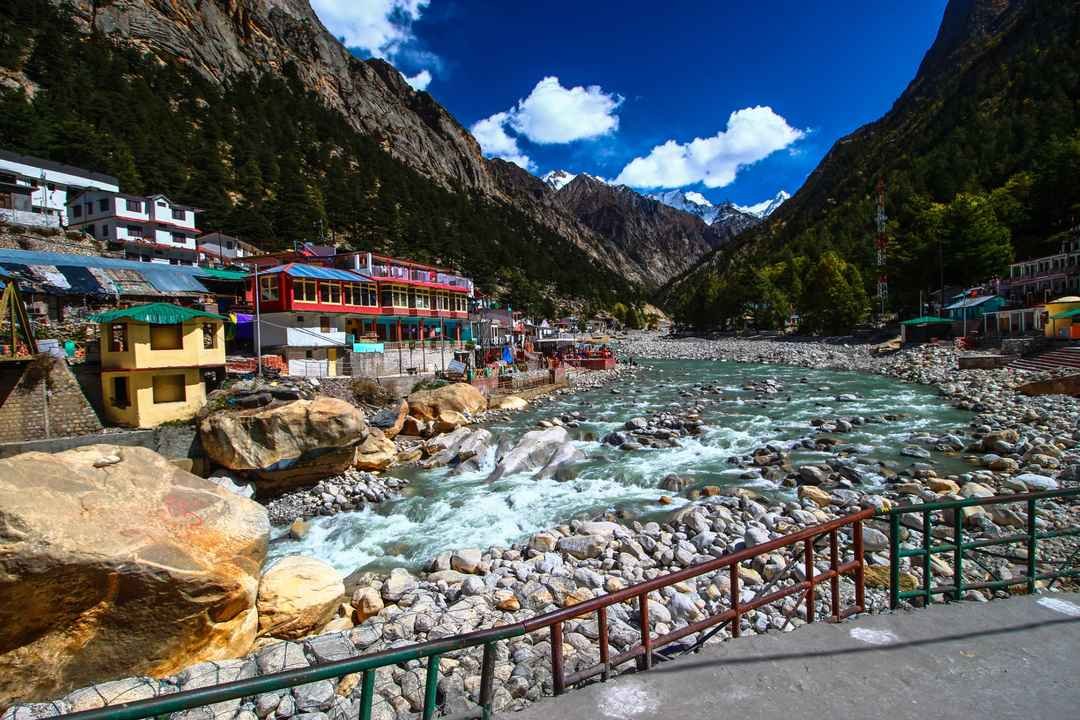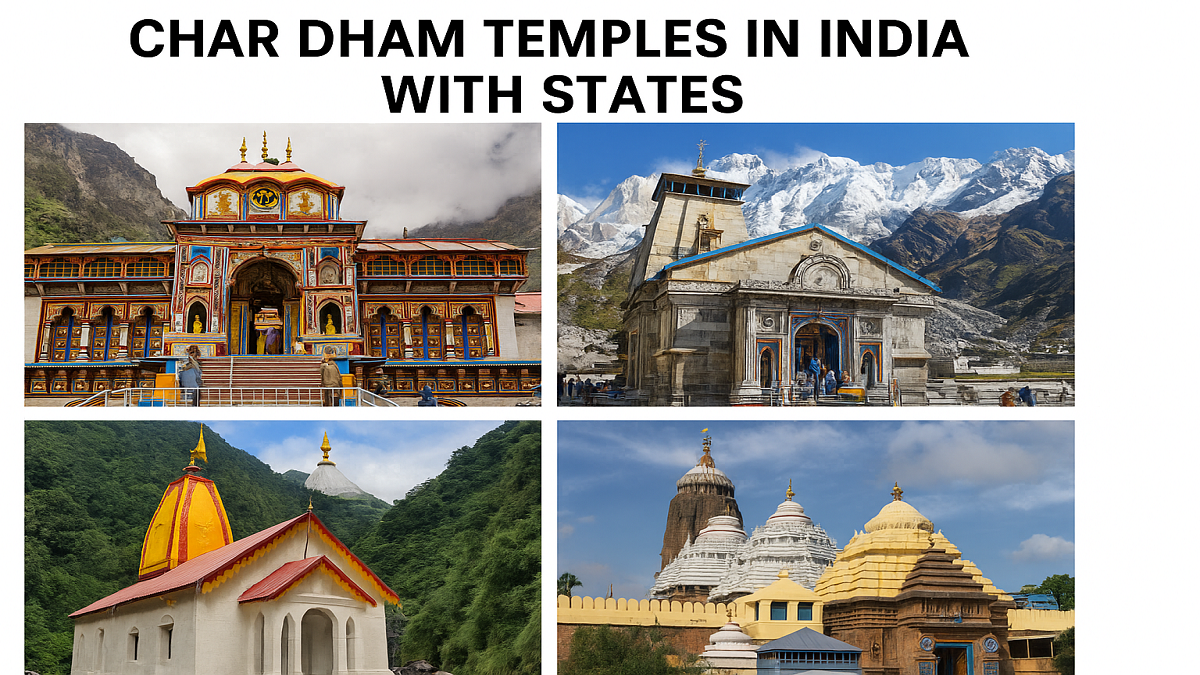The Indian 7 Dhams landscape is drenched with the sounds of the past and the footprints of spirituality, with infinitely sacred places. In this land, sanctity above all others resides in the gallant lining of the 7 Dhams in India. They shine brightly like lighthouses in the way of seekers toward inner peace, strength rejuvenated, and a feeling of belonging deep in the heart. Scattered in ever-changing realms-from standing like tall sentinels, mountain peaks to coastlines buffering that cradle the eternal waves-Dham narrates a story carved out of pious faith and fables.
Why the 7 Dhams in India Hold Enduring Importance
These 7 Dhams in India aren’t just temples; they are alive narrations of the epics, cosmogonic legends, and divine encounters. Their deities are gloriously adored, and the faith is celebrated with resilience, and pilgrimages speak hopeful testimonies through every generation. The inherent belief asserts that a devotee traveling through all the 7 Dhammas of India would eventually find the gentler lamp guiding him through the darker corridors of life.

The Complete Guide to the 7 Dhams in India
Below unfolds an enriched overview of these seven sanctums and their striking attributes.
- Badrinath Dham
Uttarakhand has always been considered the “Badrinath Dham” slogan. It has never been so close to the Himalayan heights and the luminescence of the great silver line that separates the other 7 Dhams in India. Located in the uttermost north of India, Badrinath is dedicated to Lord Vishnu, coolly standing against the very chill-streaked mountain peaks during winter, like a flame in the winds. Very vibrant and bright were its settings, which attracted many a pilgrim seeking peace, wisdom, and the very blessings of God.
- Dwarka Dham
Seemingly carved out from the tales of Lord Krishna, the beaches of Dwarka Dham glisten in the sun. As per the ancient legends, Krishna himself had created this beautiful city out of Earth. The temple faces the turbulent sea, where devotees can escape into a tranquil reverie. It is an oasis for those aspiring for peace and eternal wonderment.
- Jagannath Puri Dham
Puri is among the earliest of India’s seven most famous Dhams, located in Odisha, while the Jagannath Temple, known throughout the world, gives an overflowing atmosphere of devotion to the event of Rath Yatra, bringing millions each year into its vibrant stream. There is an atmosphere of collective beliefs, and temple offerings called mahaprasad, a whisper of culinary heritage cherished around the world.
- Rameswaram Dham
Rameshwaram southern sentinel of a pilgrimage circuit-worships Lord Shiva while keeping alive ancient connections with the Ramayana. It is believed that here Lord Rama prayed before crossing the ocean to Lanka. The temple has infinitely long corridors; perhaps they stretch through this elusive sky in a living maze. These shores are merely silent witnesses to innumerable tales carried by the winds of the ocean.

- Kedarnath Dham
There is one temple named Kedarnath, and it is the sanctum-dominant in the entire Shiva world of temples. So beautiful, it is one of the most famous and highest of the seven Dhams. Here is a magnificent journey where one has to have an awesome amount of will and sharpness when traveling to reach the shrine, because just a moment of that journey can be imagined to show breathtaking, majestic, and humbling views. It requires great endurance-a spirit that just never breaks to reach this shrine.
- Yamunotri Dham
Yamunotri Dham is part of the revered pilgrimage site Char Dham, which is believed to be the starting point of the calm river Yamuna. The idol of Goddess Yamuna is placed in this temple between the hissing hot springs and the serene hills surrounding it. The general atmosphere created here, lullaby quiet and soothing, welcomes traveler hearts afloat to breathe lightly and rest for a while.
- Gangotri Dham
Gangotri Dham stands in Uttarakhand, where the origin of the sacred River Ganges can be traced. It looks simple with hidden, tremendous spiritual power. Pilgrims come to it to see the holy waters begin their timeless journey. The fresh air, shining glaciers, and cool environment come together to form an unforgettable spiritual experience.

Distinctive Characteristics of the 7 Dhams in India
Spiritual Essence
The 7 Dhams of India marvelously resonate with the surreal depth of spirituality. Each Dham has an age-old story behind it, a story that nurtures faith and keeps the flickering hope alive in the silence of light and warmth.
Natural Grandeur
All of these, hid in some way or another in Nature, are shrines, be they veils of snow, emerald forests, and river hymns from the most distant source, or even the sea breezes, which amplify the journey that the pilgrim actually converts into exploring how much beauty man dreams of being on earth.
Cultural Heritage
Dhams actually measure the terminus or the meeting point of all Dham-pal, meaning the safeguarding or the ownership of a particular sacrosanct area. The general outlines of the seven Dhams have been summarized based on these considerations into the seven holy places of saints in India.
How to Journey Through the 7 Dhams in India
Ideal Time to Travel
June to the end of November is the time when most of the pilgrims prefer to visit, as it is that time of year when the weather is likely to be pleasant and the roads generally safe. These dhams are closed throughout the winter because the mountains become actuarial fortresses due to snow.
Family-Friendly Tips
Travel light and pack warm clothes for families planning to travel to the Seven Dhams in India, aside from making their accommodation arrangements ahead of time, especially during peak seasons.
Safety Tips for Pilgrims
Having water, taking rest, and carrying a small first aid kit will enhance the journey. High-altitude dhams require even more patience and careful walking.
Why Travelers Cherish Visiting the 7 Dhams in India
Those truly are the 7 Dhams that people believe in. It seems these places carry a person into another world where peacefulness enters the soul and makes worries disappear like thin mist when one visits. Travel memories are such that they are compared to a melodious tune reverberating long after the journey has ended, as travel is composed mainly from the richness of nature, culture, and devotion.

Postscript
Apart from architectural greats, the seven Dhams in India are calm havens and manifestations of the ancient codes of wisdom and gateways toward rejuvenation within. Each 7 Dhams teaches about compassion, courage, and hope. Whether you are seeking spiritual elevation or want some thrill on an adventure, these very shrines will present an experience into your memory, just like the stories that live long within you.
FAQs
- What is the total number of Dham in India?
India is home to the 7 Dhams that have deep value of their own.
- Which Dham is dedicated to Lord Krishna?
This Dham is known as Dwarka, especially associated with Lord Krishna.
- Where does the Ganga River originate among the 7 Dhams?
Ganga flows from the first Dham, which is Gangotri Dham.
- Which Dham has the grand Rath Yatra famous for it?
One good Rath Yatra is that at Jagannath Puri Dham.
- Which Dham requires trekking a long distance through the mountains?
This is a long yet grand trek to Kedarnath Dham.
Also Read: Is It Dharamshala or McLeodganj? – A Completely Re-Imagined, Uniquely Rendered Version


